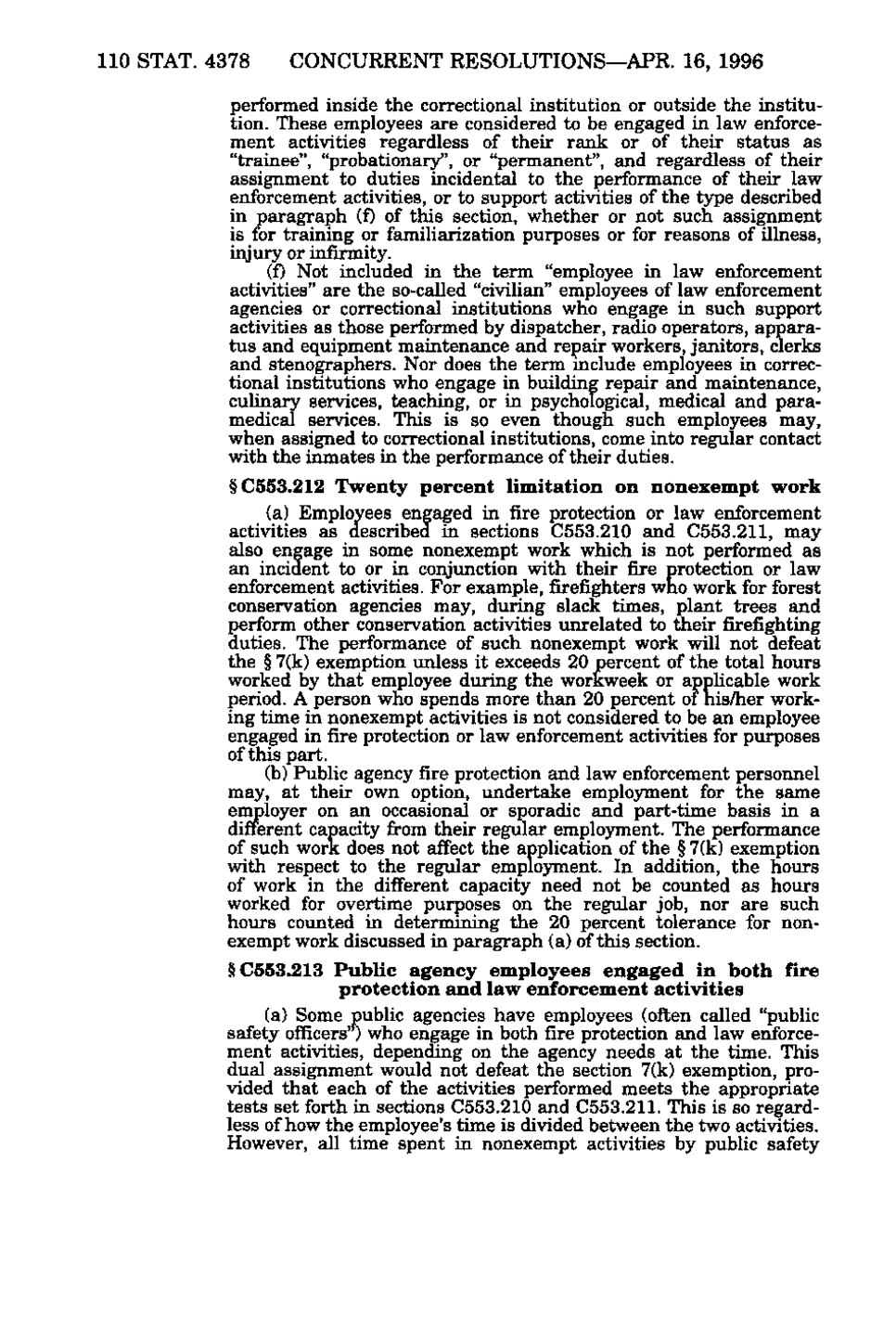110 STAT. 4378 CONCURRENT RESOLUTIONS—APR. 16, 1996 performed inside the correctional institution or outside the institution. These employees are considered to be engaged in law enforcement activities regardless of their rank or of their status as "trainee", "probationary, or "permanent", and regardless of their assignment to duties incidental to the performance of their law enforcement activities, or to support activities of the type described in paragraph (f) of this section, whether or not such assignment is for training or familiarization purposes or for reasons of illness, injury or infirmity. (f) Not included in the term "employee in law enforcement activities" are the so-called "civilian" employees of law enforcement agencies or correctional institutions who engage in such support activities as those performed by dispatcher, radio operators, apparatus and equipment maintenance and repair workers, janitors, clerks and stenographers. Nor does the term include employees in correctional institutions who engage in building repair and maintenance, culinary services, teaching, or in psychological, medical and paramedical services. This is so even though such employees may, when assigned to correctional institutions, come into regular contact with the inmates in the performance of their duties. §0553.212 Twenty percent limitation on nonexempt work (a) Employees engaged in fire protection or law enforcement activities as described in sections C553.210 and C553.211, may also engage in some nonexempt work which is not performed as an incident to or in conjunction with their fire protection or law enforcement activities. For example, firefighters who work for forest conservation agencies may, during slack times, plant trees and perform other conservation activities unrelated to their firefighting duties. The performance of such nonexempt work will not defeat the § 7(k) exemption unless it exceeds 20 percent of the total hours worked by that employee during the workweek or applicable work period. A person who spends more than 20 percent of his/her working time in nonexempt activities is not considered to be an employee engaged in fire protection or law enforcement activities for purposes of this part. (b) Public agency fire protection and law enforcement personnel may, at their own option, undertake employment for the same employer on an occasional or sporadic and part-time basis in a different capacity from their regular employment. The performance of such work does not affect the application of the § 7(k) exemption with respect to the regular employment. In addition, the hours of work in the different capacity need not be counted as hours worked for overtime purposes on the regular job, nor are such hours counted in determining the 20 percent tolerance for nonexempt work discussed in paragraph (a) of this section. §€553.213 Public agency employees engaged in both fire protection and law enforcement activities (a) Some public agencies have employees (often called "public safety officers") who engage in both fire protection and law enforcement activities, depending on the agency needs at the time. This dual assignment would not defeat the section 7(k) exemption, provided that each of the activities performed meets the appropriate tests set forth in sections C553.210 and C553.211. This is so regardless of how the employee's time is divided between the two activities. However, all time spent in nonexempt activities by public safety
�
